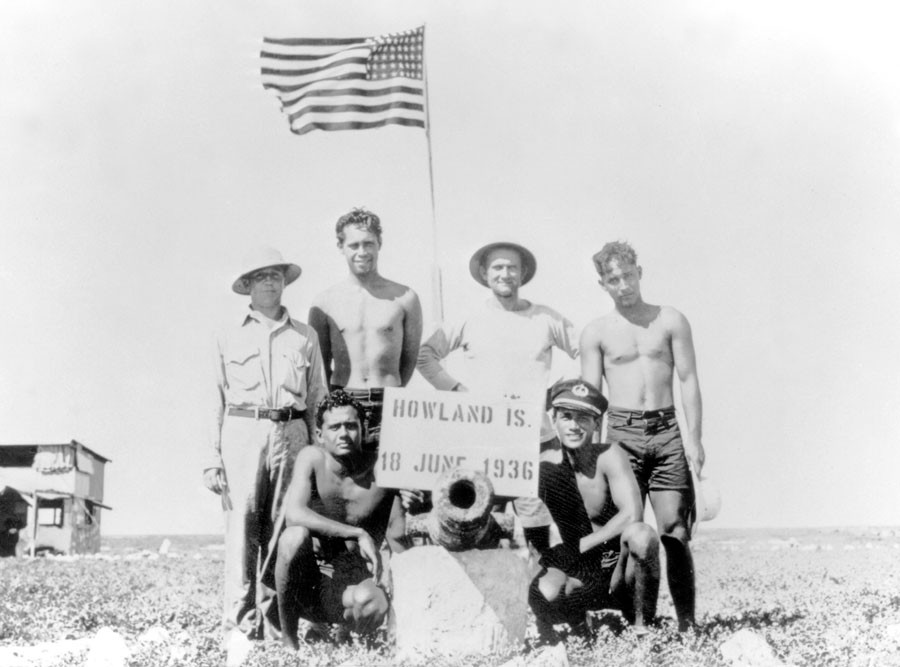
SCHOFIELD BARRACKS, Hawaii - "Under a Jarvis Moon," a 45-minute documentary developed by the Bishop Museum, was presented at the U.S. Army Garrison-Hawaii's Distinguished Lecture Series, at the Nehelani, here, Aug. 27.
The lecture series, sponsored by Col. Douglas Mulbury, commander, USAG-HI, and the Native Hawaiian Liaison Office, encourages military and Hawaiian communities to learn more about each other in an informal setting.
Noelle Kahanu, project manager, Bishop Museum, presented the film to the 170 attendees. "Under a Jarvis Moon" tells the story of U.S. efforts from 1935-1942 to colonize a trio of uninhabited atolls in the middle of the Pacific, about halfway between the Hawaiian islands and Australia.
Starting in 1935, the U.S. government sent young, mostly Hawaiian men to live on Howland, Baker and Jarvis islands, to assert territorial jurisdiction and air supremacy. U.S. Soldiers were among the colonists. The men lived on the islands for three-month shifts of four men per island.
The film combines historical interviews, still photographs, logbooks, government documents and newsreel footage. The film opens with the moon crossing the sky as an elderly man sings: "Each lonely night as I sit in my shack, it brings memories of you. I am waiting for my ship to come in, to take me back to you ... Jarvis moon makes me long for you."
The voice belongs to Kahanu's grandfather, George, who was one of the colonists. Her grandfather and another colonist composed the song, entitled "Under a Jarvis Moon."
"Jarvis Island is more than 1,000 miles from Hawaii," Kahanu said. "Jarvis, Howland and Baker (islands) served as a home for more than 130 young men from Hawaii. Of those, 52 were Hawaiian, many of them from the Kamehameha Schools. Some were graduates, and some were students, like my grandfather," Kahanu explained. "He was a junior when he was recruited by the principal to live on a desert island with three other boys for three or four months.
"So this incredible journey is what the film is about," she added.
In the film, Kahanu explained that she first learned about her grandfather's exploits when a Bishop Museum archivist asked her if she was related to George Kahanu. Replying that he was her grandfather, the archivist showed her the logbooks George kept at Jarvis Island.
"So, I went up into the library, into our archives, and she brought out this old logbook, and I opened it up and it was the handwriting of my grandfather when he was a 17- or 18-year- old," Kahanu said. "He writes much that way now. These were things that he recorded as a young man, when he was sent to live as a colonist on this deserted island, thousands of miles away from home."
Colonists kept logbooks about the weather and gathered natural specimens; they lived in tents or simple wooden structures, took showers in the rain, fished for food and surfed.
In the film, one of the colonists joked that his logbook entry basically was the same each day: "Today, I hunted for seashells."
However, the colonists' idyllic and primitive lifestyles did include incidents that would later become touchstones in history.
In 1937, the Howland colonists constructed a primitive landing field and beacon light to guide in Amelia's Earhart's plane during her around-the-world flight. Sadly, Earhart never landed there and was never discovered.
Four years later, as the hint of war in the South Pacific intensified, Japanese bombers attacked Howland. Two colonists, Richard "Dickey" Kanani Whaley and Joseph Kealoha Keliihananui lost their lives, Dec. 8, 1941, during the attack.
Two days later, after the first attack, a Japanese submarine was sighted offshore, and a U.S. Coast Guard ship rescued all inhabitants from the three islands the following month.
Out of approximately 130 men who lived on the islands, just three survive today, according to Kahanu. Her grandfather is one of the survivors.
"Under a Jarvis Moon" has been entered in the Hawaii International Film Festival and will be shown during the festival in October.

Social Sharing